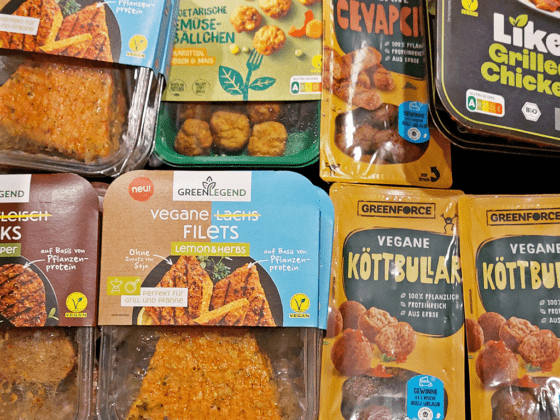“Free of microplastics” or “Without microplastics” are the words we see more and more frequently on cosmetics, hygiene, and body care products. With the increased consumer demands for sustainability and health, the number of alleged seals promising absence of microplastics is also growing. The editorial team of the TV knowledge magazine “Galileo” (Pro7) has investigated the topic and come to a clear recommendation: There is only one seal in Europe, the awarding of which is independently controlled, and thus guarantees the maximum safety possible.
A glimpse at the shelves of a big drugstore chain actually leaves a good impression: Many products are branded with seals that promise that the products are microplastic-free. Unfortunately, a label does not mean that the shampoo, soap, or lipstick is truly free of microscopic plastic particles.
Excerpt from the “Galileo” report: “Some products still contain bioplastics.” Sometimes it consists of corn or wheat, which sounds harmless at first. But: Even this plastic can take decades until it decomposes. The report goes on by stating that bioplastic production requires a lot of energy, water, and chemicals.
Greenwashing? Products are not being tested independently
The reason is simple: Germany is waiting for a standardized EU regulation – and until then is relying on producers’ voluntary self-commitment. There is no binding regulation either for the use of plastics in cosmetics or for green claiming. The environmental protection organization Greenpeace writes about this in its investigative report “Make-up removal – plastic in cosmetics”: „”Since there is still no official uniform definition of microplastics, each manufacturer practically determines on their behalf what they understand by the term “microplastics”, and which products they ban voluntarily. The interpretation of the term microplastics then often only applies as far as it fits into the production process.“
The key data for a binding EU regulation were already defined in 2019 by the EU technical agency ECHA but are not yet legally binding. The situation with regulations on green claiming and eco-labels is similar. The EU has also put this topic back on the agenda, taking the lead from the Health Claims 2006, which regulates statements on nutrition and health. In the future, this should also apply to statements about sustainability and environmental protection. Companies that claim to be environmentally friendly should provide evidence to support those claims using a standard methodology for assessing their environmental impact,” states an EU announcement.
“flustix is the experts’ favorite”.
So which seal can you trust now? The conclusion of “Galileo”‘s editors is unequivocal: The greatest reliability is offered by the flustix seal. It already meets future EU standards, and is the “experts’ favorite”. It goes on to say: “It is the first and only Europe-wide seal for microplastic certification – and the only one that excludes all types of plastics. The seal is verified and issued by independent institutes.”
Malte Biss, founder of flustix, sees the “Galileo” report as confirming his organization’s strategy. „The seal jungle in the cosmetics department makes people believe that they are bringing their bodies into contact with harmless substances. However, this is not the case. We’re also thinking about the dangers to children, which can be far greater.“ The effects of microplastics, which have now also been detected in human blood and body tissue, have not even been adequately researched. „But one thing is certain,“ says Malte Biss, „microplastics have nothing to do in the human body.“
 English
English Deutsch
Deutsch




